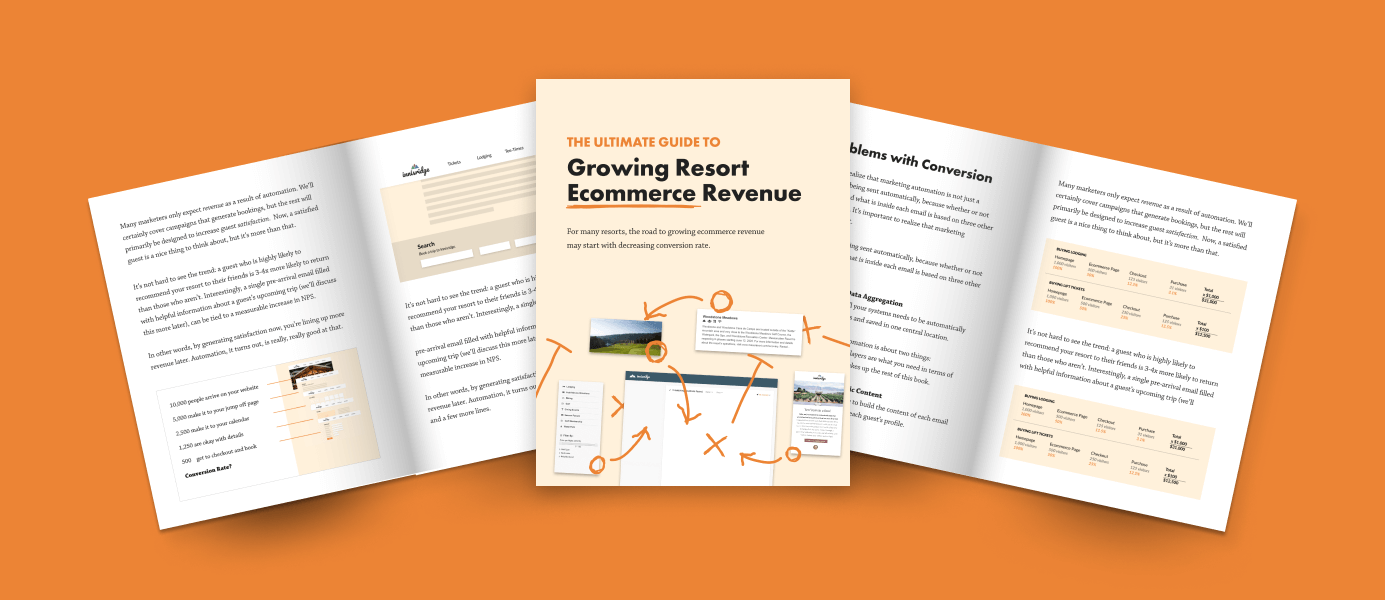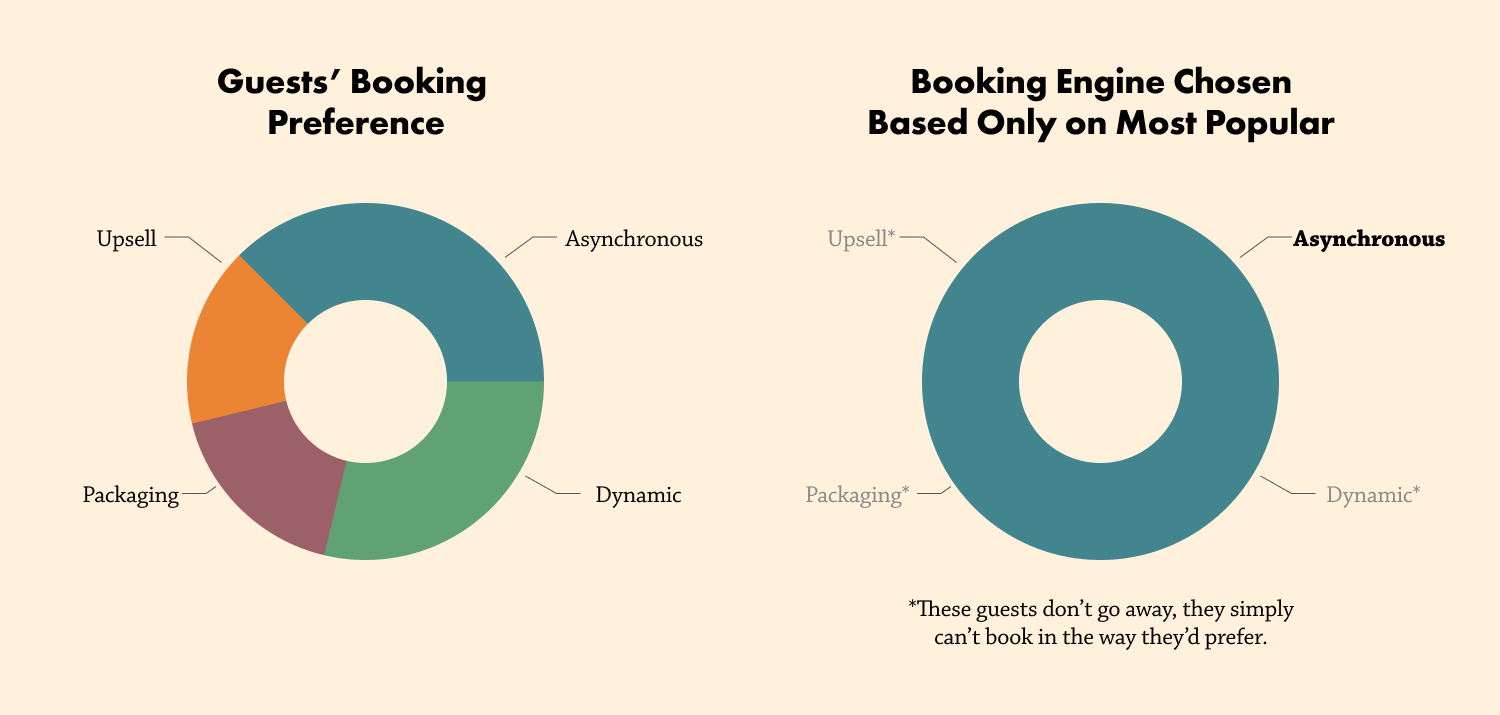
Tips

This is an excerpt from our upcoming book, The Ultimate Guide to Growing Resort Ecommerce Revenue. Click here to download a preview→
While we’ve followed a thread that leads us through the world of upsells, we also want to back up a tiny bit and ensure that we don’t lose sight of the bigger picture. Because, yes, upsells can increase revenue, but the pattern behind upsells is simply allowing your guests to buy more things they may need during their trip.
In other words, if you have the same number of guests (or even slightly fewer), it only takes a handful of those guests buying more products for your revenue to increase.
Offering complimentary products based on someone’s cart right before checkout is one means to that end, but there are certainly others.
Packaging
The most common is bundling multiple products into predefined packages. Perhaps that’s lodging, spa, and tee-times or maybe it’s waterpark and lodging. Bundles also exist without lodging like a ski resort offering lift tickets, rentals, and a lunch voucher in a package or a golf course combining tee-times, range balls, and a credit to the pro shop.
Dynamic Packaging
Instead of your team determining what goes into a package, dynamic packaging is where the guest is able to build their own package by adding the exact products they need into a single itinerary. Doing this with real-time inventory in a single interface may not feel like “packaging” any more than filling an Amazon cart with their needs would be called “packaging”, but it’s something many resorts and hotels don’t realize it’s possible so it’s important to highlight the difference.
Asynchronous Packaging
Similar to upsells in that a guest will typically book one thing and then be presented with the ability to buy something else, asynchronous packaging is when a guest books one thing and then returns at a later time to add something else to their itinerary. This can be done by pushing them into a different system where they’ll start the booking process over again or by bringing them back into the original system and simply letting them shop for and add more products to their same itinerary.
As we look at those four paths to booking multiple products – upsell, packaging, dynamic packaging, and asynchronous packaging – it’s important to consider the different types of guests these are best suited for:
What you’ll often see in the travel industry is an attempt to figure out which of these trends is the most popular at any given time so the booking path they offer aligns to the largest group of guests.
For example, some may argue that traditional packaging is king because that’s what they believe most of their guests want. And, so, they offer packaging. Others may try asynchronous packaging and, because this path aligns better to their market, see an uptick in revenue and decide to take that route. The problem with these scenarios is that unless the group you’re catering to is 100% of your market, you will always be forcing some of their guests to book in a way that doesn’t align with their needs.

You’ll either force guests who want to buy everything now to buy one thing now and another thing later or you’ll force guests who want to buy only one thing now to buy everything now or…you get the idea.
The key is not for you to pick your favorite best booking path, it’s to let the guest book their favorite booking path. The goal shouldn’t be to choose the most popular, the goal should be offering your guests all of these options.
This is an excerpt from our upcoming book, The Ultimate Guide to Growing Resort Ecommerce Revenue. Click here to download a preview→